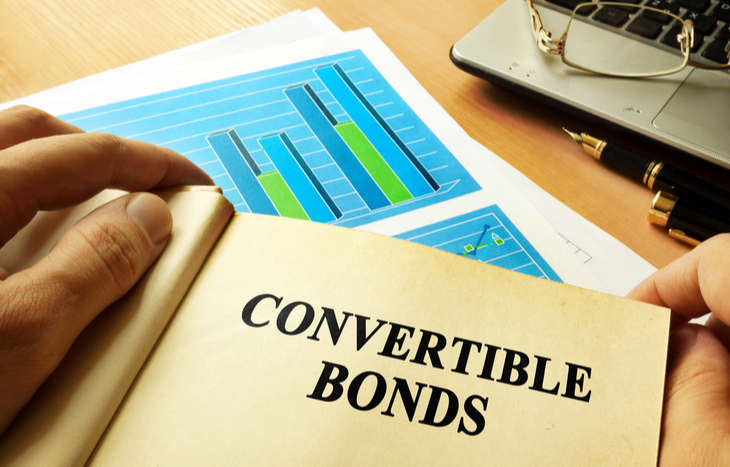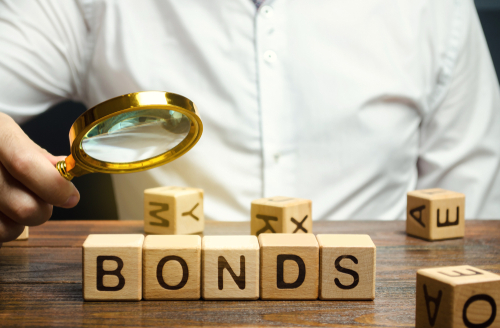What are Convertible Bonds?

Companies can raise money to run their businesses in many ways. Sometimes a company will raise equity. When they raise equity, they sell a portion of the business to a new partner or issue shares to the public in an IPO. The companies can also raise money by issuing bonds, and a less common way is through a convertible bond. If the company issues bonds, they’re borrowing money from the bondholders. Interestingly, a convertible bond has characteristics of both bonds and stocks.

What Are Convertible Bonds and How Do They Work?
Convertible bonds are hybrid securities. When a company issues this bond, it starts like a bond. The company pays bondholders a coupon rate based on its credit rating. After that, the convertible bondholders can convert the bond to the company’s common stock.
Each bond has a preset conversion ratio. The bond’s conversion ratio tells the bondholder how many common shares each bond can be converted to. For example, if a convertible bond has a conversion ratio of 5:1, the bondholder can convert the bond into five shares of common stock.
A convertible bond also has a conversion price. The conversion price is based on the conversion ratio. For instance, if a bond was purchased for $1,000 and has a conversion ratio of 5:1, the conversion price is $200 ($1,000/5).
Essentially, this bond is like a typical non-convertible bond plus a call option on the stock.
Convertible Bonds vs. Non-Convertible Bonds
The biggest difference between convertible and non-convertible bonds is how the price changes. For a standard non-convertible bond, the price changes as rates change in the bond market. In the end, a standard bond’s price has an inverse correlation to interest rates.
For example, say you bought a standard bond for $1,000, paying a 5% coupon rate. Later, you want to sell your bond. If rates have decreased in the bond market, your 5% bond will be very attractive to buyers. They will be willing to pay you more than your original $1,000 investment.
Conversely, your 5% bonds will not be competitive with other similar bonds with higher coupon rates if rates have gone up. Buyers will not be willing to pay you $1,000 for your bond.
On the other hand, a convertible bond’s price changes with interest rates and conversion options. In addition to price changes due to changes in interest rates, the price can change if the stock changes. For instance, if the underlying stock rises way above the conversion price, the bond price will also increase.
When to Convert a Convertible Bond
The best case for a convertible bondholder is when the stock goes above the conversion price by more than the value of the remaining coupon payments. For example, say the value of the remaining bonds is $250. If you convert your bond for five shares of common when the stock rises to $250 (with a $200 conversion price), then you’ll break even.
However, if the stock surpasses $250, your investment return from converting the bond and selling the shares will be higher than if you held the convertible bond until it matures.
Advantages
In addition to getting coupon payments, the bondholder can earn a higher rate of return if the stock goes up. Keep in mind that convertible bonds might pay a lower coupon in exchange for bondholders’ potential benefit from the converting.
On top of that, convertible bondholders can limit their risk of the stock doing poorly. For instance, if the bondholder does not gain from conversion, they will still get the coupon payments. Beyond that, if the stock does poorly or goes down, the convertible bondholder can still get coupon payments.
In a scenario where the bondholder doesn’t convert the bond, the bond’s price will likely go down. If this happens, the convertible bondholder can still hold the bond until it matures and get the original $1,000 investment.
In a worst-case scenario, the company goes bankrupt. In bankruptcy, convertible bondholders are in line before common stockholders. That means they will get any proceeds from selling the company’s assets before stockholders.
Disadvantages
As mentioned before, convertible bonds usually pay a lower coupon rate than similar non-convertible bonds.
Sometimes a company issues convertible bonds because they have a hard time earning a profit. If this is the case, the company might offer convertible bondholders a conversion option because bondholders think the company is risky. So, investors should also pay attention to the credit rating of the company.
Issuing a large number of these bonds can also be a risk. If the company issues a large number of them, it could also issue a large amount of stock. If the stock appreciates and all the bonds are converted into shares, the common stock owners own less of the company than they thought.







